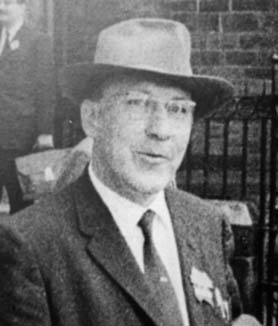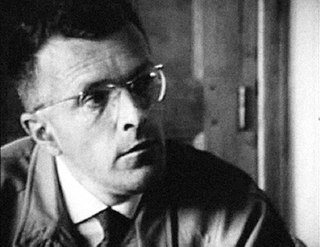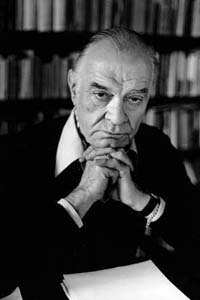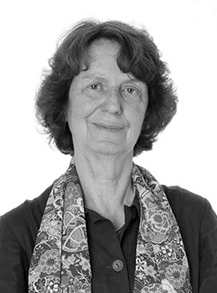
Adrien-Marie Legendre was a French mathematician who made numerous contributions to mathematics. Well-known and important concepts such as the Legendre polynomials and Legendre transformation are named after him. He is also known for his contributions to the method of least squares, and was the first to officially publish on it, though Carl Friedrich Gauss had discovered it before him.
In number theory, Dirichlet's theorem, also called the Dirichlet prime number theorem, states that for any two positive coprime integers a and d, there are infinitely many primes of the form a + nd, where n is also a positive integer. In other words, there are infinitely many primes that are congruent to a modulo d. The numbers of the form a + nd form an arithmetic progression
The year 1829 in science and technology involved some significant events, listed below.

François Joseph Charles Simiand was a French sociologist and economist best known as a participant in the Année Sociologique. As a member of the French Historical School of economics, Simiand predicated a rigorous factual and statistical basis for theoretical models and policies. His contribution to French social science was recognized in 1931 when, at the age of 58, he was elected to the faculty of the Collège de France and accepted the chair in labor history.

Claude-Louis Navier was a French Civil engineer, affiliated with the French government, and a physicist who specialized in continuum mechanics.

Szolem Mandelbrojt was a Polish-French mathematician who specialized in mathematical analysis. He was a professor at the Collège de France from 1938 to 1972, where he held the Chair of Analytical Mechanics and Celestial Mechanics.

Gilbert Simondon was a French philosopher best known for his theory of individuation and his work on the field of philosophy of technology. Simondon's work is characterized by his philosophical approach on information theory, communication studies, technology and the natural sciences. Although largely overlooked in his lifetime, the advent of the Information Age has collaborated to a reappraisal and increased interest in Simondon's books, with him being seen as someone who has precisely predicted and described the social effects and paradigms technical objects and technology itself have offered in the 21st century.

Sarrebourg is a commune of northeastern France.
Jean Laplanche was a French author, psychoanalyst and winemaker. Laplanche is best known for his work on psychosexual development and Sigmund Freud's seduction theory, and wrote more than a dozen books on psychoanalytic theory. The journal Radical Philosophy described him as "the most original and philosophically informed psychoanalytic theorist of his day."

Boulevard Saint-Michel is one of the two major streets in the Latin Quarter of Paris, France, the other being Boulevard Saint-Germain. It is a tree-lined boulevard which runs south from the Pont Saint-Michel on the Seine and Place Saint-Michel, crosses Boulevard Saint-Germain and continues alongside the Sorbonne and the Jardin du Luxembourg, ending at the Place Camille Jullian just before the Port-Royal RER station and the Avenue de l'Observatoire. It was created by Baron Haussmann to run parallel to Rue Saint-Jacques which marks the historical north-south axis of Paris. It is known colloquially as Boul'Mich' in French.

Françoise Dolto was a French pediatrician and psychoanalyst.

Denys Louis de Rougemont, known as Denis de Rougemont, was a Swiss writer and cultural theorist who wrote in French. One of the non-conformists of the 1930s, he addressed the perils of totalitarianism from a Christian point of view. After the Second World War, he promoted European federalism.

Paul Malliavin was a French mathematician who made important contributions to harmonic analysis and stochastic analysis. He is known for the Malliavin calculus, an infinite dimensional calculus for functionals on the Wiener space and his probabilistic proof of Hörmander's theorem. He was Professor at the Pierre and Marie Curie University and a member of the French Academy of Sciences from 1979 to 2010.

Dominique Venner was a French historian, journalist, and essayist. Venner was a member of the Organisation armée secrète and later became a European nationalist, founding the neo-fascist and white nationalist Europe-Action, before withdrawing from politics to focus on a career as a historian. He specialized in military and political history. At the time of his death, he was the editor of the La Nouvelle Revue d'Histoire, a bimonthly history magazine.

François Jullien is a French philosopher, Hellenist, and sinologist.

Dominique Bourg is a French philosopher. Since 2006, he is professor at the Faculty of Geosciences and Environment of the University of Lausanne (Switzerland).

Jean Leurechon was a French Jesuit priest, astronomer, and mathematician, known for inventing the pigeonhole principle and naming the thermometer.
Marta Sanz-Solé is a Catalan mathematician specializing in probability theory. She obtained her PhD in 1978 from the University of Barcelona under the supervision of David Nualart.
Alain Cophignon is a French writer, photographer and aesthetician.

Catherine Larrère is a French philosopher and academic. She is a professor of philosophy emeritus. She is a specialist in Montesquieu's philosophy and an advocate for environmental ethics.















